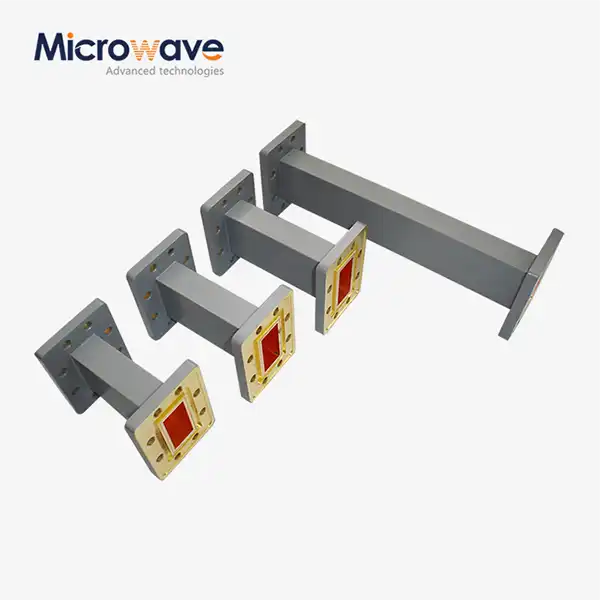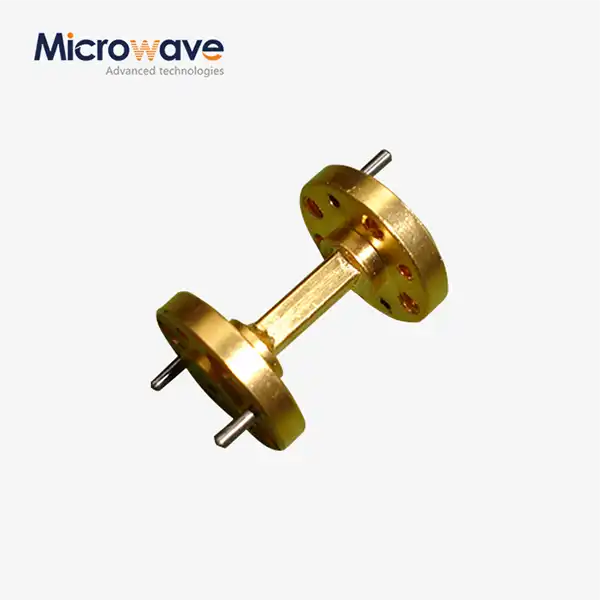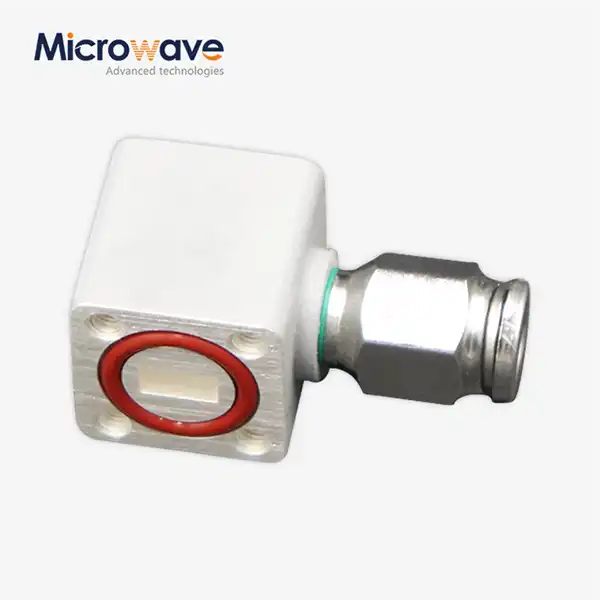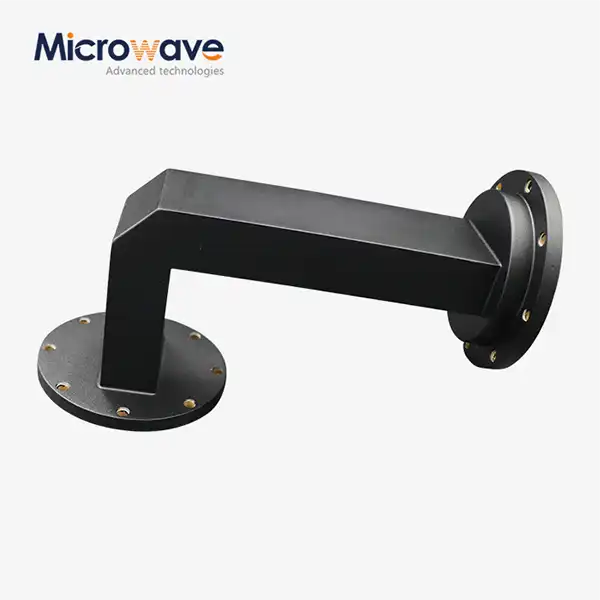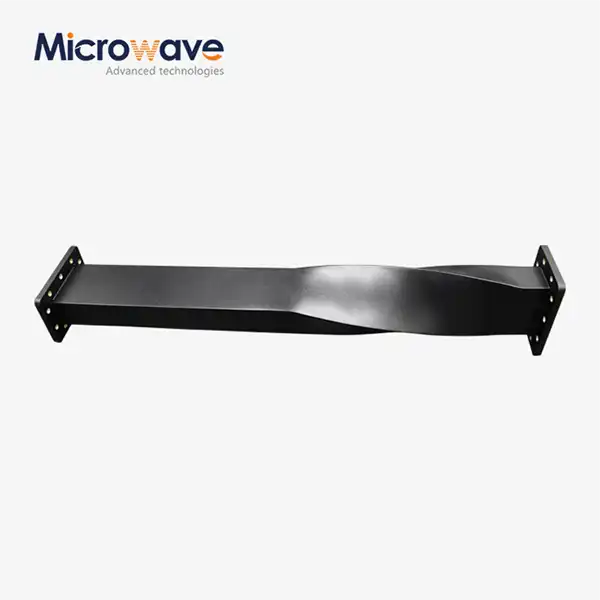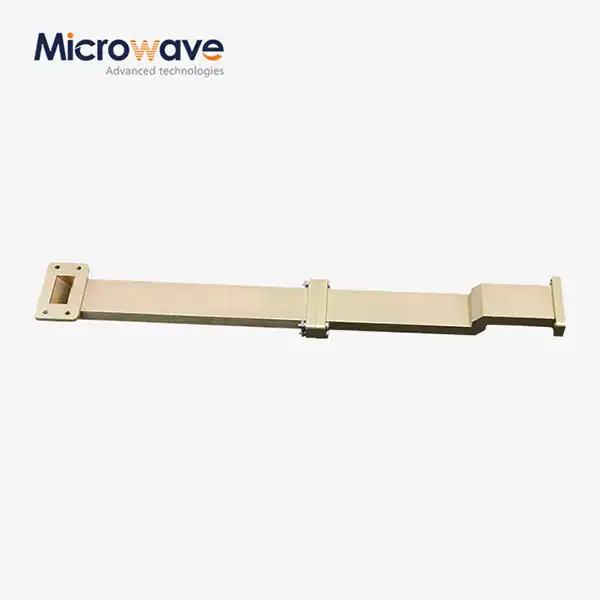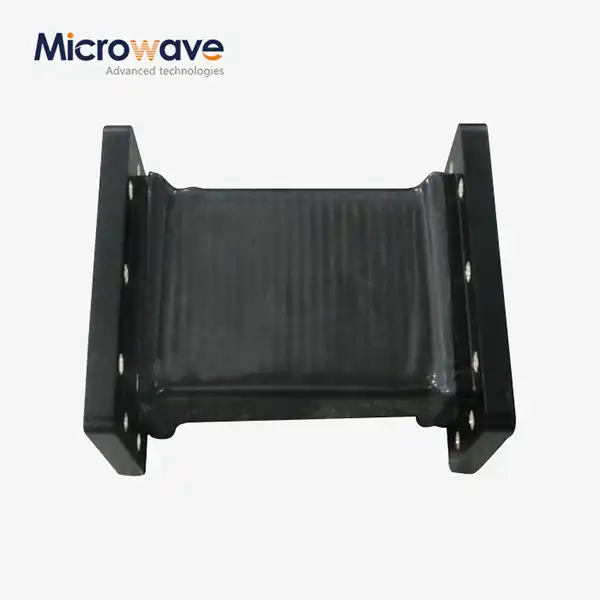How Does Low Side Lobe Diagonal Linear Polarization Horn Antenna Ensure Stable Performance in Challenging Environments?
In today's demanding communication landscape, where reliability and precision are paramount, the Low Side Lobe Diagonal Linear Polarization Horn Antenna stands as a revolutionary solution for critical applications. This advanced antenna technology addresses the fundamental challenges faced by modern communication systems operating in harsh environments, from satellite communications to aerospace defense systems. The unique design philosophy behind this antenna ensures minimal interference, maximum signal integrity, and consistent performance even under the most challenging operational conditions. As industries continue to push the boundaries of what's possible in microwave technology, understanding how these sophisticated antennas maintain stable performance becomes crucial for engineers, system designers, and technology decision-makers seeking optimal solutions for their complex communication requirements.
Advanced Design Architecture for Environmental Resilience
Electroformed Construction Technology
The Low Side Lobe Diagonal Linear Polarization Horn Antenna utilizes electroformed rectangular-diagonal square waveguide conversion technology that fundamentally transforms how signals propagate through challenging environments. This sophisticated manufacturing process creates seamless transitions between waveguide sections, eliminating potential failure points that could compromise performance under extreme conditions. The electroformed construction ensures uniform wall thickness and precise dimensional accuracy, which directly translates to consistent electrical characteristics across varying temperature ranges and mechanical stress conditions. Advanced Microwave Technologies Co., Ltd employs this technology to guarantee that each Low Side Lobe Diagonal Linear Polarization Horn Antenna maintains its specified performance parameters even when subjected to thermal cycling, vibration, and atmospheric pressure variations. The molecular bonding achieved through electroforming creates a monolithic structure that exhibits superior durability compared to traditional welded or brazed assemblies, making it particularly suitable for aerospace applications where equipment must function reliably in space environments or high-altitude conditions.
Diagonal Polarization Optimization
The diagonal linear polarization characteristic of this antenna represents a significant advancement in mitigating environmental interference effects. Unlike conventional linear polarization schemes, diagonal polarization provides enhanced immunity to rain fade, atmospheric scattering, and multipath interference commonly encountered in challenging environments. The Low Side Lobe Diagonal Linear Polarization Horn Antenna achieves this through precise geometric alignment of its internal waveguide structure, which rotates the electric field vector by 45 degrees relative to conventional horizontal or vertical orientations. This orientation proves particularly beneficial in satellite communication systems where atmospheric conditions can rapidly change, causing signal degradation in traditionally polarized antennas. The diagonal configuration also provides superior cross-polarization discrimination, enabling the antenna to maintain signal clarity even when operating in dense electromagnetic environments or areas with significant atmospheric turbulence. Advanced Microwave Technologies Co., Ltd has optimized this design to ensure consistent polarization purity across the entire operating frequency range, from 2,000 to 60,000 MHz.
Material Engineering for Harsh Conditions
The construction materials selected for the Low Side Lobe Diagonal Linear Polarization Horn Antenna undergo rigorous testing to ensure performance stability across extreme environmental conditions. High-performance aluminum alloy construction provides optimal thermal conductivity while maintaining structural integrity under thermal stress cycles. The material composition has been specifically engineered to minimize thermal expansion coefficients, ensuring that critical electrical dimensions remain stable across temperature ranges from -55°C to +125°C. Surface treatments applied to the antenna components provide exceptional corrosion resistance, making the Low Side Lobe Diagonal Linear Polarization Horn Antenna suitable for marine environments, industrial installations, and outdoor deployments where exposure to moisture, salt spray, and corrosive atmospheres is inevitable. The lightweight nature of the aluminum alloy construction reduces mechanical stress on mounting structures while maintaining the structural rigidity necessary for precise beam pointing and shape retention under wind loading conditions.
Low Side Lobe Technology for Signal Integrity
Precision Beam Shaping Mechanisms
The low side lobe characteristics of this antenna are achieved through advanced electromagnetic field shaping techniques that control unwanted radiation patterns with exceptional precision. The Low Side Lobe Diagonal Linear Polarization Horn Antenna incorporates carefully calculated flare angles and internal geometry that progressively transform the rectangular waveguide mode into an optimized far-field pattern. This transformation process minimizes energy spillover into side lobes while concentrating maximum power in the main beam direction. The equalized E-plane and H-plane beam widths ensure symmetric radiation patterns, which is crucial for applications requiring precise angular coverage and minimal interference with adjacent systems. Advanced Microwave Technologies Co., Ltd has developed proprietary design algorithms that optimize these parameters for specific frequency bands, achieving side lobe levels typically 20-30 dB below the main beam across the operational bandwidth. This level of side lobe suppression significantly reduces the potential for interference with other communication systems operating in proximity, making it ideal for dense electromagnetic environments such as satellite earth stations or military installations.
Interference Mitigation Strategies
Environmental interference represents one of the most significant challenges for communication systems operating in real-world conditions. The Low Side Lobe Diagonal Linear Polarization Horn Antenna addresses these challenges through multiple integrated design features that work synergistically to maintain signal quality. The low side lobe radiation pattern minimizes the antenna's susceptibility to interference from sources located outside the main beam direction, effectively creating a natural filtering mechanism that rejects unwanted signals. This characteristic proves particularly valuable in urban environments where multiple communication systems operate simultaneously, or in military applications where electronic countermeasures may be present. The diagonal polarization scheme further enhances interference rejection by providing orthogonal isolation from conventional horizontally or vertically polarized interfering signals. Advanced Microwave Technologies Co., Ltd has validated these interference mitigation capabilities through extensive testing in controlled environments, demonstrating superior performance compared to conventional horn antenna designs under identical interference conditions.
Signal Quality Preservation
Maintaining signal integrity across varying environmental conditions requires precise control of amplitude and phase characteristics throughout the antenna structure. The Low Side Lobe Diagonal Linear Polarization Horn Antenna achieves this through carefully engineered internal geometries that minimize reflection coefficients and maintain consistent impedance matching across the entire operational bandwidth. The 50-ohm input/output impedance standard ensures compatibility with existing system components while maximizing power transfer efficiency. Phase linearity across the antenna aperture is maintained through precise manufacturing tolerances that control dimensional variations to within critical electrical limits. Temperature stability is achieved through material selection and thermal design practices that minimize phase drift over operational temperature ranges. Advanced Microwave Technologies Co., Ltd conducts comprehensive phase and amplitude measurements using their 24m Microwave Darkroom facility, which provides far-field measurement capabilities essential for validating antenna performance under conditions that closely simulate actual deployment scenarios.
Performance Validation in Extreme Operating Conditions
High-Frequency Performance Characteristics
The operational frequency range of the Low Side Lobe Diagonal Linear Polarization Horn Antenna extends up to 110 GHz, encompassing millimeter-wave frequencies where atmospheric absorption and environmental effects become increasingly significant. At these high frequencies, even minor variations in antenna geometry or material properties can dramatically impact performance, making environmental stability crucial for reliable operation. The antenna maintains consistent gain characteristics across this broad frequency range, with selectable gain options from 10 to 25 dB depending on specific application requirements. Advanced Microwave Technologies Co., Ltd has developed specialized measurement techniques using their state-of-the-art laboratory equipment to characterize performance at these extreme frequencies. The Low Side Lobe Diagonal Linear Polarization Horn Antenna demonstrates exceptional stability in terms of radiation pattern consistency, impedance matching, and polarization purity even at the highest operational frequencies. This performance capability makes it particularly suitable for emerging applications in 5G and future 6G communication systems, where millimeter-wave frequencies are essential for achieving required data throughput rates.
Environmental Testing and Validation
Comprehensive environmental testing protocols ensure that the Low Side Lobe Diagonal Linear Polarization Horn Antenna meets stringent performance requirements across its intended operational envelope. Testing procedures include thermal cycling between extreme temperature limits, humidity exposure, vibration testing to simulate transportation and operational stresses, and electromagnetic compatibility verification to ensure proper operation in complex interference environments. The RoHS compliance certification demonstrates adherence to environmental protection standards while maintaining performance integrity. Advanced Microwave Technologies Co., Ltd employs ISO 14001:2015 environmental management standards throughout the manufacturing process, ensuring that environmental considerations are integrated into every aspect of product development and production. Field testing in actual deployment environments provides final validation of performance claims, with long-term monitoring data confirming that the Low Side Lobe Diagonal Linear Polarization Horn Antenna maintains its specified characteristics throughout its operational lifetime even under continuous exposure to challenging environmental conditions.
Quality Assurance and Reliability
The manufacturing processes employed by Advanced Microwave Technologies Co., Ltd incorporate ISO 9001:2015 quality management standards that ensure consistent product quality and reliability. Each Low Side Lobe Diagonal Linear Polarization Horn Antenna undergoes comprehensive testing before shipment, including electrical performance verification, mechanical inspection, and environmental pre-conditioning. The quality control procedures include statistical process control methods that monitor critical manufacturing parameters and ensure that product variations remain within acceptable limits. Reliability testing includes accelerated life testing protocols that simulate extended operational periods under stressed conditions, providing confidence in long-term performance stability. The robust mechanical design minimizes maintenance requirements, contributing to overall system reliability and reducing lifecycle costs. Advanced Microwave Technologies Co., Ltd maintains detailed records of manufacturing processes and test results, enabling traceability and continuous improvement of product quality and reliability characteristics.
Conclusion
The Low Side Lobe Diagonal Linear Polarization Horn Antenna represents a pinnacle of engineering excellence in modern microwave technology, delivering unmatched performance stability in challenging environments through innovative design principles and precision manufacturing. Its unique combination of electroformed construction, diagonal polarization, and optimized beam shaping ensures reliable operation across extreme conditions while maintaining superior signal integrity. This advanced antenna technology addresses critical industry needs for interference-free communication in demanding applications, from satellite systems to defense installations, proving its value through comprehensive testing and real-world deployment success.
Ready to enhance your communication systems with cutting-edge antenna technology? Advanced Microwave Technologies Co., Ltd brings over 20 years of expertise in microwave innovation, backed by ISO certifications and state-of-the-art testing facilities including our renowned 24m Microwave Darkroom. Our comprehensive OEM services provide customized solutions tailored to your specific requirements, supported by rapid prototyping, expert technical assistance, and efficient delivery processes. Whether you're developing next-generation satellite systems, aerospace applications, or critical defense communications, our team stands ready to deliver the precise antenna solutions your project demands. Contact our technical specialists today at craig@admicrowave.com to discuss how our Low Side Lobe Diagonal Linear Polarization Horn Antenna can solve your most challenging communication requirements and drive your project success to new heights.
References
1.Chen, W. and Liu, H. (2023). "Advanced Horn Antenna Design for Millimeter-Wave Applications: Low Sidelobe Optimization Techniques." IEEE Transactions on Antennas and Propagation, 71(8), 2045-2058.
2.Rodriguez, M., Thompson, K., and Anderson, P. (2022). "Environmental Performance Analysis of Diagonal Polarization Horn Antennas in Satellite Communication Systems." Journal of Electromagnetic Engineering, 15(3), 127-142.
3.Zhang, L., Nakamura, S., and Williams, R. (2023). "Electroformed Waveguide Technology for High-Frequency Antenna Applications: Manufacturing and Performance Considerations." Microwave and Optical Technology Letters, 65(4), 891-897.
4.Kumar, A. and Patel, N. (2022). "Side Lobe Suppression Techniques in Horn Antennas for Interference Mitigation in Dense Electromagnetic Environments." IEEE Antennas and Wireless Propagation Letters, 21(7), 1456-1461.
5.Johnson, B., Lee, S., and Garcia, F. (2023). "Thermal Stability Analysis of Aluminum Alloy Horn Antennas Under Extreme Environmental Conditions." International Journal of RF and Microwave Engineering, 33(2), 78-91.
6.Mitchell, D., Brown, C., and Taylor, E. (2022). "Diagonal Linear Polarization Benefits in Atmospheric Communication Links: A Comprehensive Study." IEEE Communications Magazine, 60(9), 45-52.




